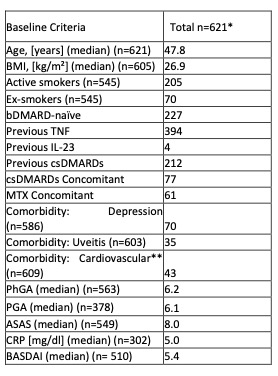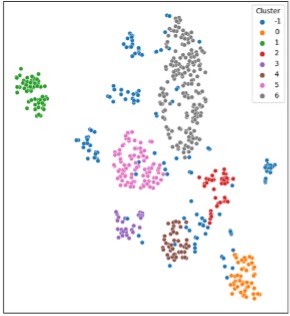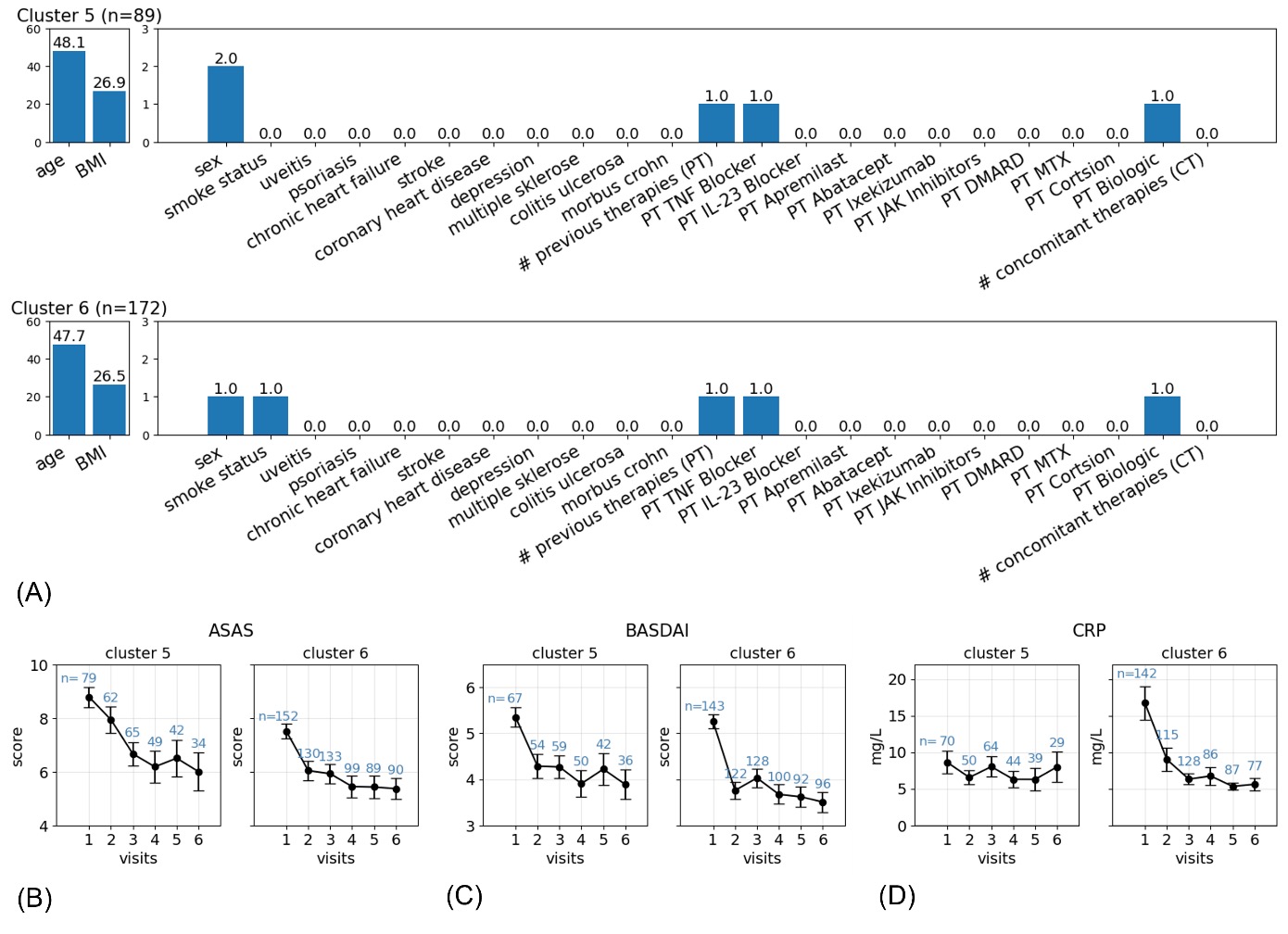Session Information
Date: Sunday, November 12, 2023
Title: (0510–0542) Spondyloarthritis Including Psoriatic Arthritis – Treatment: AxSpA Poster I
Session Type: Poster Session A
Session Time: 9:00AM-11:00AM
Background/Purpose: Individualized treatment strategies are of high importance in the treatment of patients with axial spondyloarthritis (axSpA). IL-17A inhibition has demonstrated good efficacy on axSpA. Nevertheless, approx. 30% of the patient will not achieve remission after initiation of systemic therapy. Therefore, the identification of patient characteristics leading to higher response rates to bDMARD treatments are important to guide treatment choice and its adjustments in clinical routine care to promote an improved outcome. An adapted machine learning approach (cluster analysis) is used to analyze baseline (BL) patient characteristics to detect clinical patterns of disease activity in axSpA patients treated with secukinumab (SEC) in a non-interventional trial.
Methods: Data from 621 patients enrolled in the German non-interventional AQUILA study with active axSpa, whose first SEC treatment occurred no more than 4 weeks prior to BL, was analyzed. All patients were included, irrespective of treatment response We identified patient groups by applying an extended version of the machine learning method of hierarchical density-based clustering (HDBSCAN) to BL data, where features included patient and disease characteristics variables as well as standardized patient-reported outcome (Table 1).Feature groups with high numbers of missing values were initially excluded, and subsequent clustering was performed to achieve the stepwise integration of all features. At each step, an additional feature group was included in a re-clustering using a complete subset of subjects. This led to a further split of some of the original clusters. For every final cluster, disease activity over the course of the study was visualized including patient and physician-derived assessments.
Results: The machine learning approach resulted in the categorization of 7 clusters of patients and outliers (n=139, cluster -1)(Fig.1). The primary focus of this analysis lies on medially relevant clusters, which exhibit similar characteristics including little prior and ongoing therapy, but differ in their sex (cluster 5: n=89, female; cluster 6: n=172, male, Fig. 2A). While women had a significantly higher subjective ASAS-HI (p=.003, Fig 2B), BASDAI was comparable in both groups at BL. At week 52 disease activity (ASAS-HI and BASDAI, Fig 2B, 2D) did not differ significantly between both groups. At BL CRP was significantly higher among male patients (p=.04, Fig 2C) and showed stronger improvement after one year of SEC treatment (p=.001, Fig 2C), leading to a comparable mean outcome (4.0 vs. 3.9).
Conclusion: We present a machine learning approach applied to the heterogeneous axSpA cohort from AQUILA. Differences were found in the two clusters which differ primarily in sex. At BL, female patients had higher subjective ASAS-HI while male axSpA patients showed higher CRP values whereas BASDAI was comparable. No differences in disease activity remain at week 52. This initial difference in disease perception between male and female groups converges to similar outcomes after 1 year of SEC therapy, emphasizing the treatment’s effectiveness across sexes.
To cite this abstract in AMA style:
Koehm M, Klippstein M, Kugler S, Mackay S, Schulz D, Vodencarevic A, Wendt G, Peterlik D, Kiltz U, Brandt-Juergens J, Behrens F. Sex-dependent Differences in Disease Characteristics Do Not Influence Effectiveness of Secukinumab Therapy in Patients with Active Axial Spondyloarthritis in a Non-Interventional Trial (AQUILA) [abstract]. Arthritis Rheumatol. 2023; 75 (suppl 9). https://acrabstracts.org/abstract/sex-dependent-differences-in-disease-characteristics-do-not-influence-effectiveness-of-secukinumab-therapy-in-patients-with-active-axial-spondyloarthritis-in-a-non-interventional-trial-aquila/. Accessed .« Back to ACR Convergence 2023
ACR Meeting Abstracts - https://acrabstracts.org/abstract/sex-dependent-differences-in-disease-characteristics-do-not-influence-effectiveness-of-secukinumab-therapy-in-patients-with-active-axial-spondyloarthritis-in-a-non-interventional-trial-aquila/



